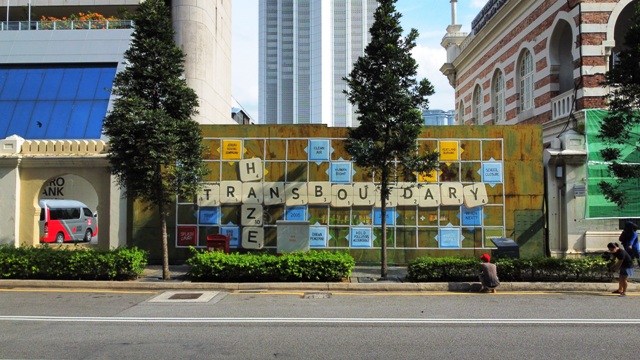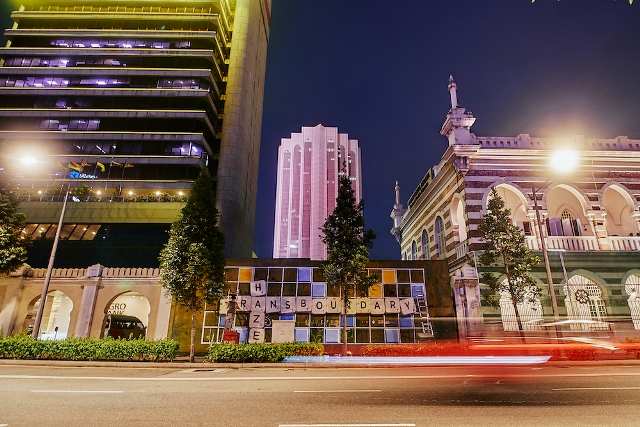
To coincide with World Environment Day, Lithuanian Artist Ernest Zacharevic reveals ‘Transboundary Haze’, a new artwork in Kuala Lumpur launching a collaboration with Greenpeace, Splash and Burn and filmmakers Studiobirthplace. The project is the first in a series of creative intervention planned throughout the year, urging authorities to hold polluters to account for clean air as a basic human right.
Splash and Burn takes it name from the agricultural technique of clearing Palm oil plantations. ‘Slash and burn’ is a fast, cheap and largely unregulated method of cleaning the land by fire. The project aims to create awareness of the devastating affects of unregulated activity guided by local knowledge and NGOs
Previous interventions for the project have considered the impact on wildlife, small communities and farmers, deforestation and the transboundary haze. This year partners with Greenpeace Malaysia, activating awareness of the role local companies play in contributing to unclear air.
The urgency of the issue is at its peak, with communities already suffering reduced immunity following Covid-19, now set to endure another haze season. 2015 was one of the worst on record, with the haze connected to over 500,000 respiratory diseases, infections and deaths
The new work illustrates a oversized scrabble board with the ivory coloured tiles spelling the words ‘Transboundary Haze’. Double and treble word score squares outline key issues and moments around the topic such as human rights infractions, peatland regulation, school closures and notable years (1997, 2005, 2015) which saw exacerbated weather conditions, economic downtown to the tune of millions, and unprecedented destruction from fire. On bottom left, a Splash and Burn tile, far right, a Greenpeace tile.
“We believe art can help the general public to understand and relate to the issue on a more personal level. We hope it can start the conversation and encourage policymakers to address the issues meaningfully. We should not have to wait for another haze season to look for solutions,” – Ernest Zacharevic
The complexity of the issue and its dire consequences have resulted in many misconceptions, with blame often passed to neighbouring countries Singapore and Indonesia. Leading the project, Greenpeace Malaysia campaigner Heng Kiah Chun emphasised that there are solutions within reach, but it requires strong actions taken by the government.

“Deforestation and transboundary haze pollution happened in the region for years. This is why it is important that haze pollution and forest protection be part of the main agenda in the upcoming general election,” he said. “We must consider the harm increased air pollution will bring when we are still grappling with the Covid-19 pandemic and the economic devastation it has brought. The government should enhance air quality governance, strengthen the recognition of environmental rights – that having a clean, healthy and sustainable environment is a human right , as has recently been done by the United Nations Human Rights Council.”
What is the Transboundary Haze?
The Transboundary haze is a yearly occurrence of pollution in Southeast Asia, especially for the region’s southern countries, Malaysia, Singapore and Indonesia. The main drivers of transboundary haze are man-made; Palm oil and acacia (used for pulp and paper products) It results in a variety of ecological, economic and health effects.
ASEAN (association of Southeast asian nations) is home to 56% of global tropical peatlands (carbon rich soil) but more than 3 million hectares of peatlands area in Southeast Asia have been destroyed by fires for land cultivation.
You may consider a modest donation — however much you can afford, when it comes from the heart, it’s the kind of gesture that makes us warm with appreciation.
leave your comment